In the spring, Kit and I attended an event held by the Glasgow Seed Library. We learnt about seed sovereignty and landrace seed projects, and took home about 20 okra seeds to take part in “an experiment with a high chance of failure”. Glasgow Seed Library have distributed seeds widely with the aim of cultivating a variety of okra that is better adapted to the Scottish climate.

We planted the seeds, and raised them between us in polytunnels in two different gardens in Dysart. We had about a 75% success rate at germination – which was higher than expected.

Okra (also known as ladies fingers, or bindi) is a tropical plant, native to East Africa and typically grown in warm temperate regions – not exactly what we’re used to in East Scotland.
Ultimately, two made it to maturity – both Kit’s.
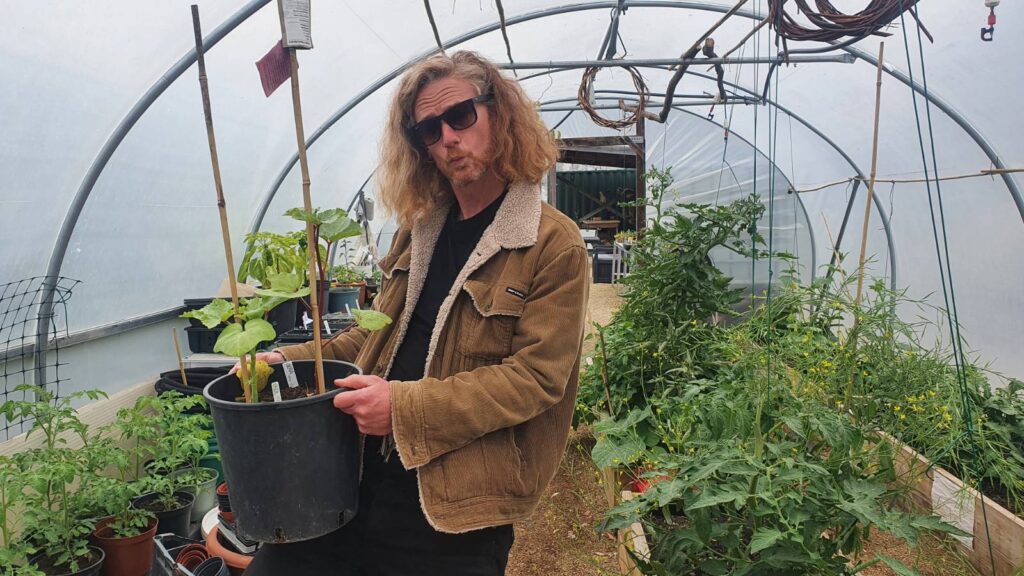
Each plant produced one chunky little okra fruit each. Not exactly enough for a meal, but enough to collect a handful of seeds from. Kit says…
Initially the seedlings were really weak and spindly and I didn’t think that they were going to come to much.
I grew okra in Fife last year, and the plants were successful but none of the flowers were pollinated.
I had to keep a close eye on how much they were watered, as they were in a mixed bed beside tomatoes and chillis. This time I kept them separate, and hand-pollinated them, tickling the flowers with a paintbrush.
We were stunned by the flowers, and baffled by the differences between the two plants. One was short with a red stem and fruit, and the other was tall and bright green. Having very limited experience of growing okra, we didn’t really know what to expect or whether this was normal.
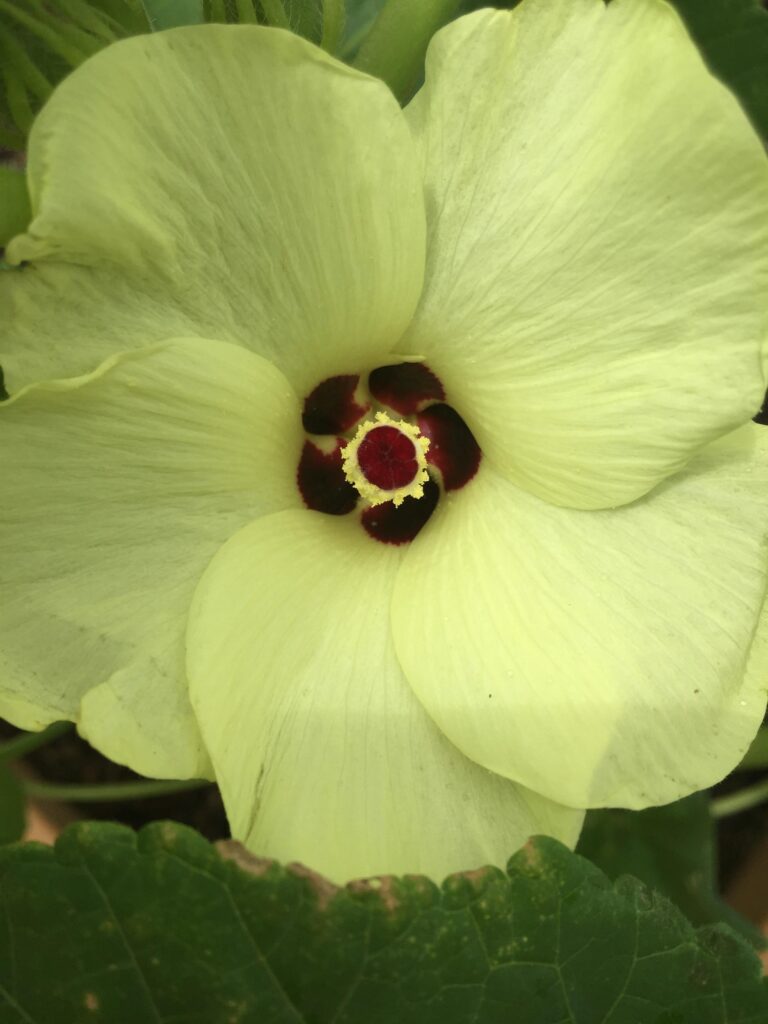

Once the fruit grew, we didn’t pick it, allowing it to dry on the stem naturally. After about a month of drying out, Kit extracted about 10 seeds from each pod. These seeds are the next generation of Scottish okra, which contain memories of what it’s like to grow up in Fife. This genetic coding will be passed to future generations grown from this seed, increasing their resilience to the Scottish climate each time.
We’ll return the seeds to the Glasgow Seed Library, hopefully adding to their collection of successes from 2025. The seeds will then be tested, catalogued, and redistributed to develop even hardier generations.

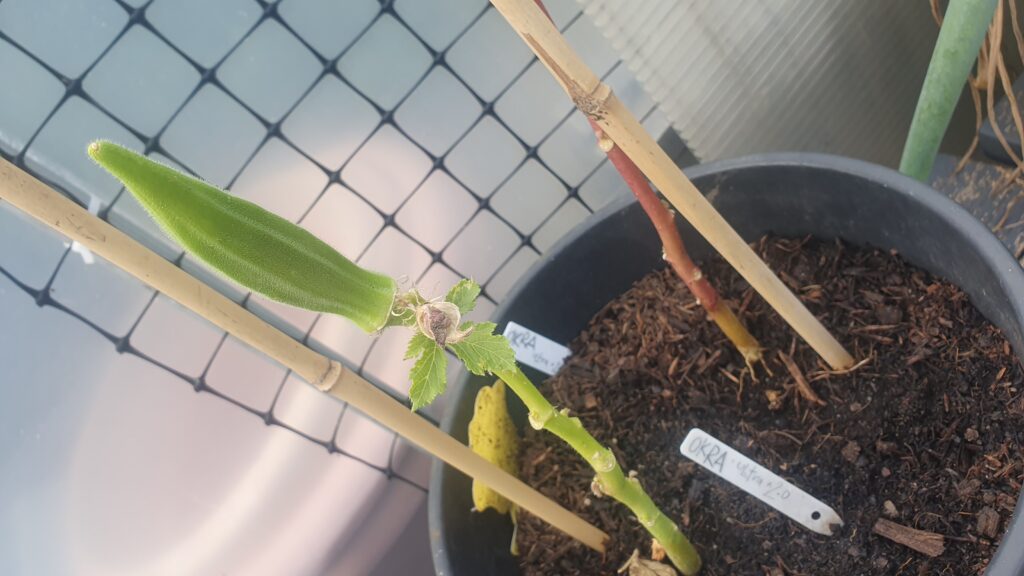
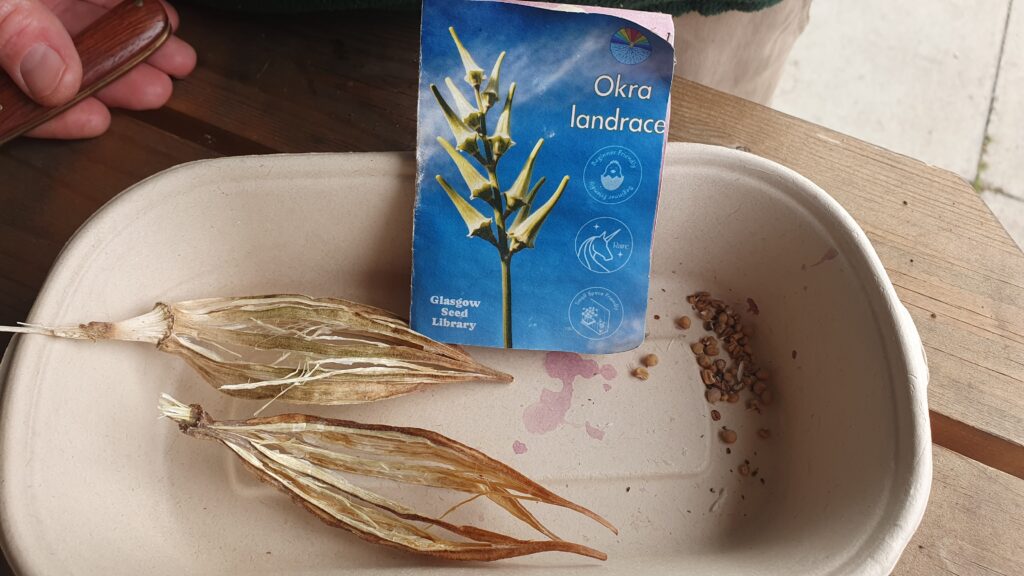
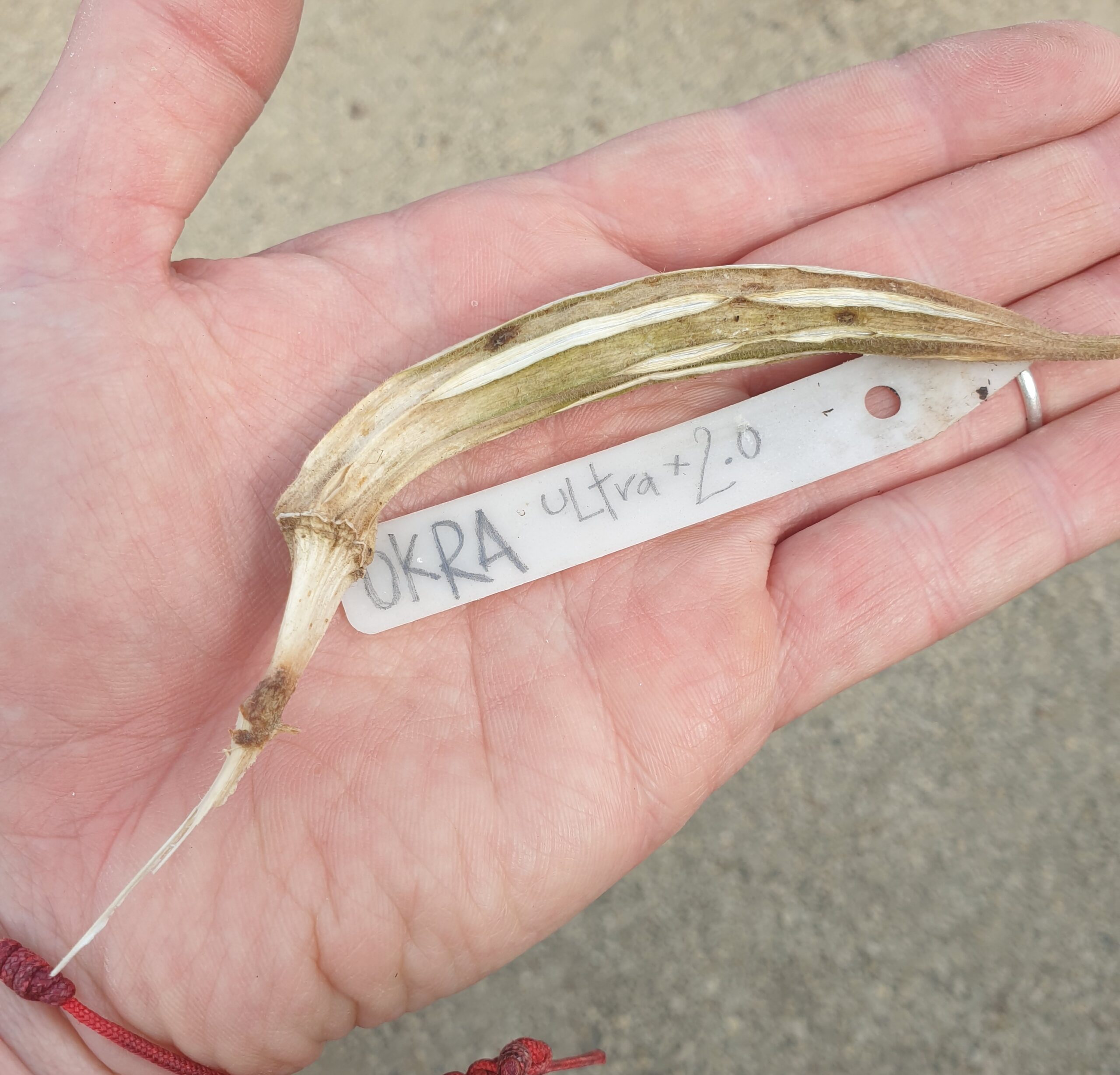
Leave a Reply